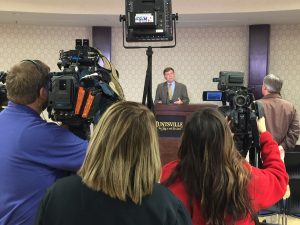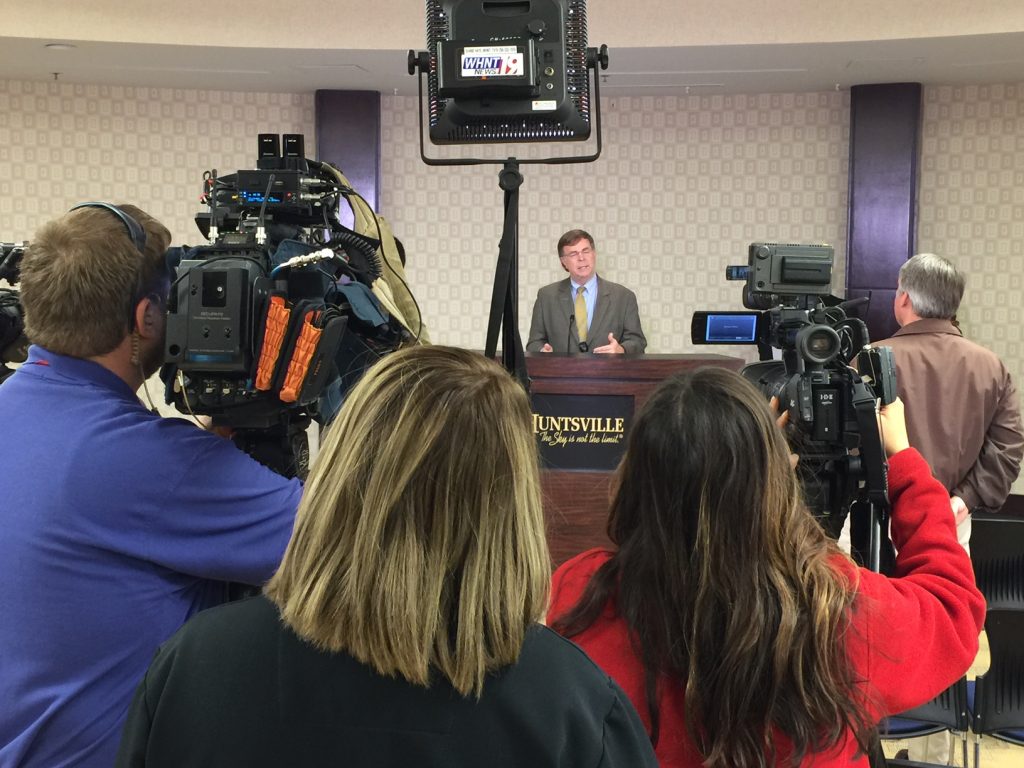Restore Our Roads Moves Huntsville Forward in Infrastructure Planning
Published on February 15, 2017

Huntsville’s major road network is undergoing nearly one-half billion dollars in improvements to keep up with the City’s continued growth and industrial development, thanks to the Restore Our Roads initiative and funding from the City’s capital plan.
Projects include new overpasses and access roads on Highway 231 (South Parkway at Lily Flagg, Martin Road interchange, and North Parkway at Mastin Lake); improvements to Research Park Boulevard, Highway 72 West (University Drive) and Cecil Ashburn Drive; the new Northern Bypass, widening of Zierdt Road, realignment and widening of Church Street, the new Dr. Joseph Lowery Boulevard, and recently completed improvements to Highway 72 east.
“These projects wouldn’t have been built for decades if we had not pushed for the Restore Our Roads plan,” said Mayor Battle. “We saw the condition of our primary corridors and knew something had to be done.”
Restore Our Roads is a $250 million cost-sharing agreement signed in 2014 between the City of Huntsville and the Alabama Department of Transportation. Huntsville’s portion is funded through a one-cent sales tax, committing $25 million per year for major road construction. The City is also spending an additional $5 million per year out of its capital budget to help address more critical roadwork.
As these projects head toward completion in the next three to four years, the City says it’s time to start looking at the next round of major infrastructure requirements.
There are at least four significant transportation projects Huntsville needs to keep traffic moving, according to Shane Davis, Director of Economic and Urban Development. Each concerns a federal or state highway and Davis estimates the cost to be $500 million. The list includes:
- New interchange at I-565 at the Parkway
- Extend I-565 east from Maysville Road through the City limits
- Interchange modifications at I-565 and Research Park Boulevard at Redstone Arsenal
- East Arsenal Connector providing a corridor from I-565 to Southeast Huntsville
“There is no way cities can fund projects of this magnitude,” said Davis. “Restore Our Roads was a great start in getting our main infrastructure up to speed, but we still need to find a solution for these federal and state highway projects.”
How that will happen is the big question. City leaders are listening closely to the conversation in Washington, D.C., where Congressional leaders are calling for more infrastructure dollars.
For Mayor Battle, inaction isn’t an option. “Huntsville must stay ahead of the curve if we are going to maintain our infrastructure, our healthy economy, and keep traffic flowing,” said Battle.


